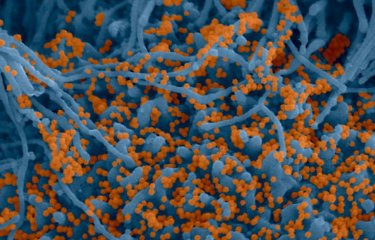-
Article | 2020.08.20
The Carnot Label
Founded in 2006, the Carnot Label, granted by the French government, was designed to develop partnership-based research, meaning research conducted by public laboratories in partnership with socio-economic players, primarily industry (from SMEs to large corporations), to serve their needs.
-
Document de presse | 2020.04.24
Development and evaluation of four serological assays to detect SARS-CoV-2 antibodies and two assays to detect neutralizing antibodies
Approximately four months after the initial description of cases of atypical pneumonia in Wuhan, China, in December 2019, COVID-19 had become a major pandemic threat. By April 12, 2020, around half of the world's population was in lockdown, with 1.8 million officially diagnosed cases. Scientists from the Institut Pasteur, the CNRS, Inserm and Université de Paris conducted a pilot study to...
-
Article | 2020.08.20
Innovation Our Organization Biographies
Dr. Larzul, PhD, has joined the department of Technology Transfer & Industrial Partnerships in 2018 has head of the Detection, Financing of Innovation & Entrepreneurship Office.Daniel Larzul gained his first industry experience when he joined the pharmaceutical company Ipsen, then contributed to the creation of the molecular diagnostics startup BioInnova. He subsequently joined Texcell,...
-
Page avancée | 2020.08.26
About us
The Technology Transfer and Industrial Partnership Department helps researchers and industrial partners, from initial scientific discovery through exploitation and implementation of inventions.
-
Document de presse | 2020.10.15
Innate immunity and fusion of cells infected with SARS-CoV-2
Innate immunity is the fastest-acting component of the immune system, but so far little is known about its role during infection with SARS-CoV-2. A few hours after an infection, the body emits an alarm signal, interferon, enabling cells that have not yet been infected to produce antiviral proteins. This phenomenon occurs well before the production of neutralizing antibodies. Scientists from the...
-
Page avancée | 2020.08.27
Startups alumni
Since the first spin-off set up in 1997, many companies have launched their business at the Institut Pasteur and generally maintain ties with the Institute.
-
Page avancée | 2020.08.28
Industry Partnerships
Partnering with industrial operators is the way to succeed in technology development to transform inventions into successful products for the benefit of patients and public health. The Institut Pasteur and its industrial partners are collaborating to achieve this goal.
-
Article | 2020.09.01
2023 Annual Report - Institut Pasteur
The purpose of the Institut Pasteur Annual Report is to describe the significant advances, the scientific breakthroughs and the different highlights that have been achieved over the past year.
-
News | 2020.09.03
Monkeypox: the epidemic potential will continue increasing, with diminishing herd immunity against viruses responsible for smallpox
Monkeypox is an emerging infectious disease for which outbreak frequency and expected outbreak size in human populations have steadily increased. The geographic spread of monkeypox cases has expanded beyond the forests of central Africa, where cases were initially found, to other parts of the world, where cases have been imported. This transmission pattern is likely due to the worldwide decline...
-
Document de presse | 2021.01.19
COVID-19: a lentiviral vaccine candidate for intranasal administration provides sterilizing protection in animal models
Scientists from the Institut Pasteur-TheraVectys Joint Laboratory recently published in Cell Host & Microbe1 the results of tests, in two preclinical models, of a COVID-19 vaccine candidate using a lentiviral vector administered by nasal route. Their study demonstrates that the vaccine candidate induces antibody response with strong neutralizing activity against SARS-CoV-2, as well as...


